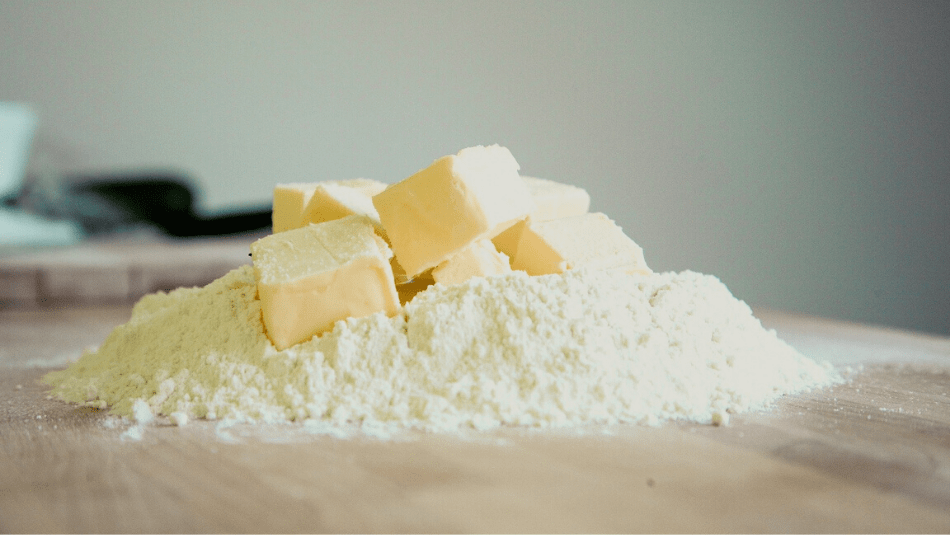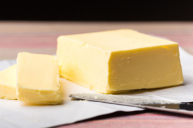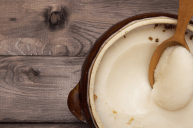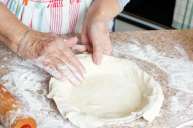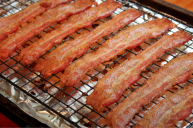We've all had that moment where we start mixing up ingredients for a baking project and then discover that we're out of one ingredient. Because baking is all about chemistry, sometimes that ingredient can be swapped and sometimes it can't. When it comes to the kind of fat you need to use in your recipe, it's good to know the difference between shortening and butter and vegetable oil because knowing how you can swap between those fats can save your baked good.
Videos by Wide Open Country
In spite of the plethora of ways to avoid adding fat to your baked goods (and yes, you can swap in applesauce or pumpkin for fat, but it does change the texture of the finished product if that's an issue), most baked goods really do need some kind of fat. Fat, whether it's shortening, butter, lard or vegetable oil, changes how a baked good feels and how it rises or spreads. It can also affect taste, so you want to add the right fat for your baking recipe.
Know Your Fats: Differences Between Shortening, Butter, Oil, and Lard
Butter
Butter is mostly fat and partly water (at least 80 percent fat, no more than 16 percent water, and some milk solids). The water is key because it turns to steam in the oven, and when water (in liquid or steam form) interacts with flour it turns into gluten, meaning your cookies end up crispier and your pie crusts flakier. The temperature of butter matters, too, which is why you get different cookie textures depending on if you melt or soften butter before adding it to cookie dough and why you want your butter as cold as possible for the best biscuits and pie crusts.
Why butter? I mean, it's butter. You can't beat the taste and texture; it's rich and full, but it still turns out light baked goods.
Shortening
https://www.instagram.com/p/B-cw2lMgQBZ/
Shortening is 100 percent fat and no water, usually made from hydrogenated soybean, cottonseed, or palm oil. It's cheaper than butter and because it's shelf-stable, keeps longer. Originally, vegetable shortening was basically terrible for you because of the amount of trans fat in it, but changes in how it's made means that most shortening is made of saturated fats instead of trans fats these days. Shortening also has a higher melting point (it's a semi-solid at room temperature), which means that cookies turn out taller because the eggs and flour have more time to set before the fat melts.
Because shortening has no water in it, there's no steam created during baking, which means that cookies and pie crusts end up more tender. It's also good in buttercream frostings, because of the lack of water and higher melting temperature means it doesn't fall apart as quickly. Shortening doesn't really taste like anything (even the shortening with butter flavoring), which can be a pro or con depending on what you're baking.
Vegetable Oil
While you would never use liquid oil in cookies or pie crusts, vegetable oil is brilliant in cakes and quick bread. It's 100 percent fat, with no water. It's also lighter than butter: a cup of melted butter weighs about 227 grams, while a cup of vegetable oil weighs about 218 grams. That means your baked good ends up lighter as well. Using oil makes for a tender, moist cake, which is usually what you want in a cake (the only difference would be using butter instead of oil in a pound cake or other cake where you want a more dense structure).
One definite difference between oil and butter in a cake is how the cake refrigerates. If your recipe needs to go in the fridge to keep, the butter will solidify (and you'll have to let the cake sit before you eat it), but the oil-based cake is always ready to go.
You can use some butter and some oil in a cake; try replacing about a fifth of the butter in your favorite cake recipe with oil and see how it turns out. You can also use a blend of oils; you might use a tiny bit of walnut oil or orange oil to add some extra zing to your cake.
Lard
https://www.instagram.com/p/B_u5DbdpOJC/
Lard is rendered pork fat and some cooks swear by it for the best pie crusts, though only if you can find pure leaf lard. This is not a hydrogenated fat and does not contain any trans fat. There's no dairy in it, so if you're dairy-free, it's a good fat to use.
The verdict? If it's a cake or quick bread, you can swap shortening, butter and oil, though there will be some taste and texture differences. If it's a cookie recipe, you can use shortening, lard or butter, unless it's for something like shortbread where you want to use only high-quality butter. For pie crusts, it's your choice, depending on what taste and texture you like.
This article was originally published on November 23, 2016.
